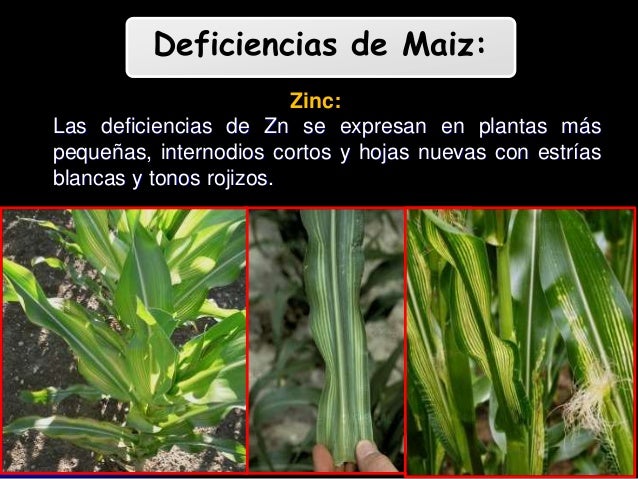Deficiencias Nutricionales Maiz Pdf

Please NoteThe agronomic programs of IPNI outside Canada ceased operations on April 1, 2019. This website remains online to provide a repository of past IPNI publications. Questions about past IPNI operations and projects can be forwarded to the International Fertilizer Association, The Fertilizer Institute, or Fertilizer Canada.IPNI's MissionThe mission of IPNI is to develop and promote scientific information about the responsible management of plant nutrition for the benefit of the human family.IPNI is a global organization with initiatives addressing the world's growing need for food, fuel, fiber and feed. There is widespread concern for issues such as climate change and relationship of crop production to the environment and ecosystems, and IPNI programs are achieving positive results. Best management practices (BMPs) for nutrient stewardship encourage the concept of applying the right product (source), at the right rate, at the right time, and in the right place.
Deficiencias Nutricionales Del Maiz Pdf
OBJECTIVE: To identify geographical areas in Latin America and the Caribbean where biofortification of staple crops, such as beans, corn, rice, cassava, and sweet potatoes, might help reduce nutritional deficiencies in the Region. METHODS: A geographic information system (GIS) was produced with records on nutritional risks, crop production, food consumption, and demographic and socioeconomic data, for 11 countries in the Region. Four case studies were conducted (in Bolivia, Colombia, Guatemala, and Mexico) using exploratory and descriptive analysis of thematic maps that were superimposed and compared to reveal overlapping and spatial patterns, thereby identifying areas suited to intervention. RESULTS: In Guatemala, the highest rates of nutritional risk, bean production, and population density overlapped in the northeast and southeast areas.
Enfermedades Del Cultivo De Maiz Pdf


In Mexico, spatial distribution of the highest risk levels for nutrition, poverty, and corn production were concentrated in the central and southern municipalities. In Bolivia, bean production tended to be in the eastern part of the country, and nutritional risk, in the west. In Colombia, both nutritional risk and cassava production showed wide geographic dispersion. CONCLUSIONS: For Guatemala, we propose iron biofortification of beans in the southern parts of the northeast and southeast; for Mexico, amino-acid biofortification of corn in the central and southern municipalities that produce it; for Bolivia, iron and zinc biofortification of beans in the bean-producing areas of Santa Cruz, Chuquisaca, and Tarija; and for Colombia, β-carotene biofortification of cassava in the Cordoba and Cundinamarca departments.(AU).